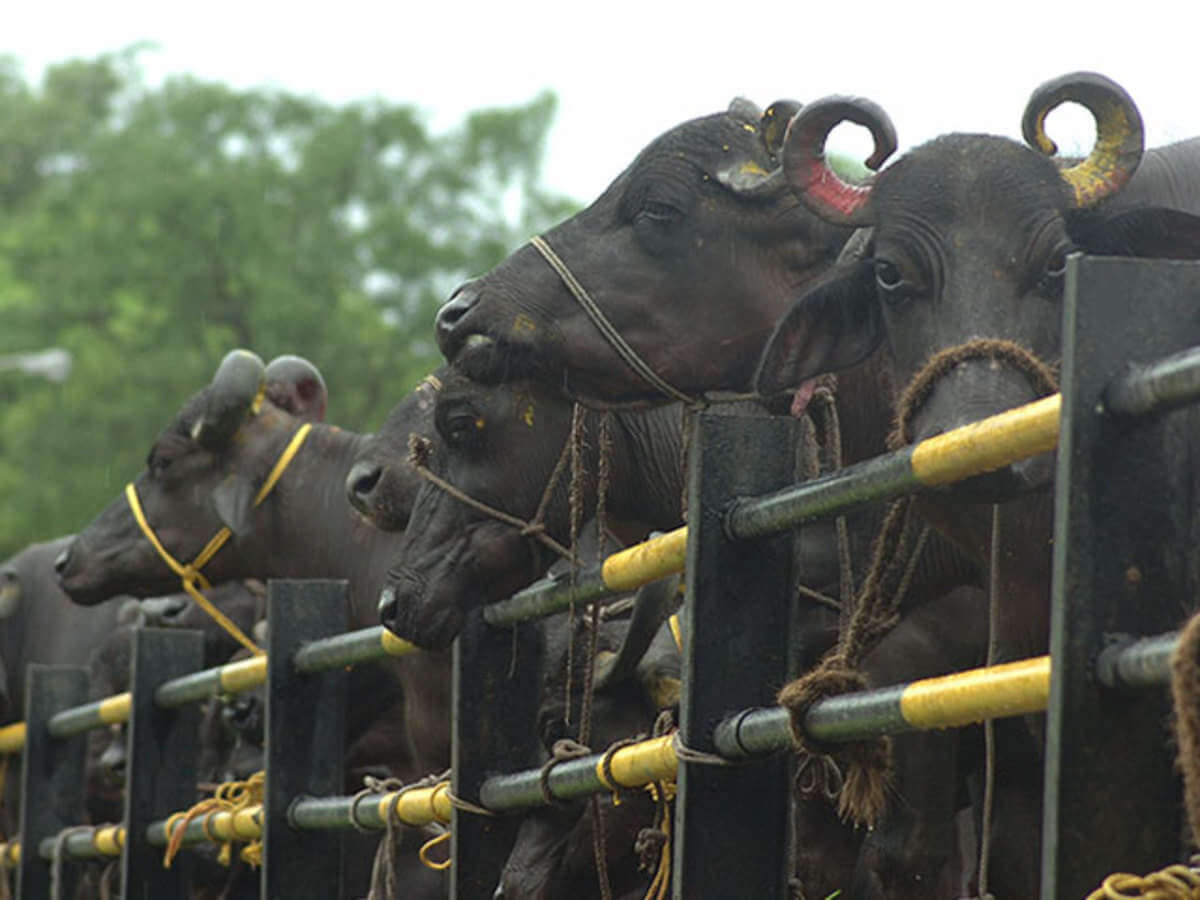The word 'beef' in India immediately conjures images of sacred cows, but in fact, the beef and livestock industries are significant contributors to the Indian economy. However, the economic viability of these industries is under threat by limited regulations, poor sanitation and disease management strategies, and Hindutva forces pushing for beef bans and executing vigilante justice through mob lynchings.
While beef is traditionally understood as meat from cows and buffaloes, the Indian government only allows for the slaughter and export of buffalo meat, commonly known as carabeef. Despite this, India is the second-largest beef exporter in the world after Brazil, and the Indian livestock sector contributed to about 4.5% of the country’s total GDP in 2015-16.
The countrywide average of cattle-owning households is around 30 per cent, but less than 15 per cent of cattle-owning households own non-milk producing bovine. Usually, cattle that no longer yield milk are sold to an abattoir for the meat industry.
While American and Brazilian farmers typically rear cattle specifically for slaughter, Indian farmers use cattle in mixed farming systems for transport, grazing, fertilization, dairy, and meat, thereby opening multiple avenues for income. This reduces their financial reliance on meat-selling and leads to lower prices for consumers.
In the year 2018-19, as per the Agricultural and Processed Food Products Export Development Authority, Indian beef exports were valued at a whopping INR 25,168.33 crores, with Vietnam, Malaysia, Indonesia and Iraq being the biggest importers. One of the main reasons that Indian carabeef exports are so lucrative is because they are priced 20% cheaper than meat from Brazil. Another is that beef slaughtered in India is halal by law, thereby becoming accessible to Muslim-majority countries in North Africa, and West and Southeast Asia.
In addition, there is very little demand for the meat locally. The majority of people in the top beef-producing states are vegetarian, and there is a preference for chicken, mutton and egg among non-vegetarians. Furthermore, the authorities and the upper-caste Hindu population in these states–Haryana, Gujarat, Uttar Pradesh, Bihar–tend to emphasize the sacredness of cows.
However, the absence of regulations, poor sanitation and disease management strategies, and Hindutva forces threaten to derail the economic success of India's beef and livestock industry.
The carabeef industry is by and large an informal sector, making it difficult to implement regulations on sanitation and quality. There is a lack of awareness regarding proper medical care and effective disease management practises, and there has been little investment in policymaking for livestock as precedence is given to agriculture.
India struggles to meet the strict sanitation standards of developed countries. The prevalence of the foot and mouth disease in India’s cloven-hoofed population blocks India’s entry not just into the Chinese market, but also the EU. Furthermore, Indian cattle husbandry practices use very little commercial feeding.
In addition, moves to implement a nationwide ban on cow slaughter have gained momentum under the Modi government. Many view this as an attempt to appease the Hindu majority and morally police the lives and livelihoods of religious minorities and tribal communities. Policies such as the beef ban and the fear of mob lynchings have driven down the prices of bovine animals and made cattle-rearing economically and emotionally draining for small farmers, which has negatively impacted dairy farming, leather production, and beef exports.
It is noteworthy that members of the government discourage the domestic consumption of beef while the same administration simultaneously pushes the production of beef for export purposes. For instance, the Modi government is actively aiming to secure beef exports to China, one of the biggest beef markets in the world.
To counter sanitation and disease management concerns, the Central government launched a livestock vaccination programme to eradicate the disease in around 300 million bovines, which cost INR 13,343 crore. Such measures must be complemented by greater investment in the carabeef industry to ensure better regulations and improved sanitation standards. In addition, beef producers should require licensing, and the government should subsidize cattle feed so as to incentivize the provision of a higher quality diet for cattle.
Reforms in the beef export industry could result in huge gains in markets such as China and Russia, which have currently restricted imports due to concerns about sanitation and cattle-feed. Therefore, maintaining the economic viability of the beef and livestock industries is dependent on the implementation of strict regulations on ethical and healthy husbandry practices, and the disestablishment of religiously motivated policymaking and social activism.

SOURCE: The Economic Times
